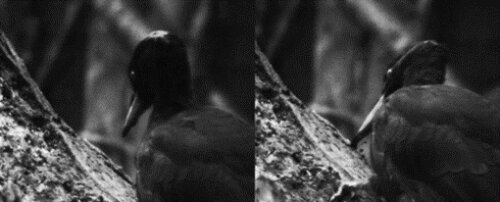Promoter: Sam Van Wassenbergh

Subject: A recent study using high-speed video data of woodpeckers pecking showed that the head's translational deceleration during impact is high but remains below levels that could cause brain damage. However, rotational velocity and accelerations can also induce brain tissue strains and harmful strain rates. Head rotations occur regularly during pecking: the beak often strikes the bark in a non-perpendicular manner, causing the head to exhibit short instances of abrupt head yaw. This study aims to quantify, as precisely as possible based on existing single-view videos, the rotational velocities and accelerations of the head. These measurements can then be compared to known thresholds of primate brain injury after applying scaling models. Furthermore, the study will assess how these kinematics during pecking compare to other actions, like throwing wood splinters, for which also high-speed videos have been recorded. A challenge of this project will be to perform the fitting and registration process by matching a 3D model of the bird's head to its 2d video appearance over time. Software such as Blender or Autodesk Maya can be employed for this purpose.
This topic can be chosen as both an IP and an MP. In IP format, the focus will be on a more limited sample of videos.
Techniques: video analysis, 3D registration, comparative kinematical analysis
.